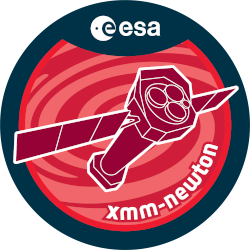

| Proposal ID | 060167 |
| Title | Hyperluminous X-ray Sources |
| Download Data Associated to the proposal | https://nxsa.esac.esa.int/nxsa-sl/servlet/data-action-aio?obsno=0601670101 |
| DOI | https://doi.org/10.5270/esa-gtn4lbz |
| Principal Investigator, PI | Dr Timothy Roberts |
| Abstract | It is now thought that most ultraluminous X-ray sources harbour stellar remnant(up to 100 M(sun)) black holes undergoing extreme accretion. However, this doesnot preclude some ULXs being powered by larger intermediate-mass black holes.Perhaps the best candidates are the rare hyperluminous X-ray sources, the mostluminous of ULXs with L(x) above 10^41 erg/s. Here we propose XMM-Newtonobservations of two HLXs found as serendipitous sources in the 2XMM catalogue.We will determine whether their characteristics are similar to other ULXs, e.g.showing a spectral break at a few keV, implying they are small black holesaccreting at extreme rates, or whether they instead appear like IMBHs accretingin a sub-Eddington (high or very high) state. |
| Publications |
|
| Instrument | EMOS1, EMOS2, EPN, OM, RGS1, RGS2 |
| Temporal Coverage | 2009-06-27T06:13:20Z/2009-06-27T22:33:36Z |
| Version | 17.56_20190403_1200 |
| Mission Description | The European Space Agencys (ESA) X-ray Multi-Mirror Mission (XMM-Newton) was launched by an Ariane 504 on December 10th 1999. XMM-Newton is ESAs second cornerstone of the Horizon 2000 Science Programme. It carries 3 high throughput X-ray telescopes with an unprecedented effective area, and an optical monitor, the first flown on a X-ray observatory. The large collecting area and ability to make long uninterrupted exposures provide highly sensitive observations. Since Earths atmosphere blocks out all X-rays, only a telescope in space can detect and study celestial X-ray sources. The XMM-Newton mission is helping scientists to solve a number of cosmic mysteries, ranging from the enigmatic black holes to the origins of the Universe itself. Observing time on XMM-Newton is being made available to the scientific community, applying for observational periods on a competitive basis. |
| Creator Contact | https://www.cosmos.esa.int/web/xmm-newton/xmm-newton-helpdesk |
| Date Published | 2010-07-15T00:00:00Z |
| Last Update | 2025-08-04 |
| Keywords | "XMM", "XMM-Newton", "stellar remnant", "imbhs accreting", "2xmm catalogue", "hyperluminous xray sources", "blackhole accreting", "ultraluminous xray sources", "xmm newton", "spectral break", "sub eddington", "msun blackhole" |
| Publisher And Registrant | European Space Agency |
| Credit Guidelines | European Space Agency, Dr Timothy Roberts, 2010, 'Hyperluminous X-ray Sources', 17.56_20190403_1200, European Space Agency, https://doi.org/10.5270/esa-gtn4lbz |